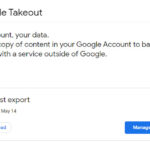Thanks to Web.Archive.org you can certify online content that is no longer available
With Web.Archive.org (the Internet Archive’s Wayback Machine) you can legally certify the contents of websites that are no longer available.
The World Wide Web is a vast and ever-evolving place, where billions of pages are published and deleted. Many sites that were once accessible are no longer online due to shutdowns, migrations, or policy changes. What many people do not know is that there is a practical way to retrieve earlier versions: the Internet Archive’s web archive.
The Wayback Machine is a digital library that hosts billions of archived web pages since 1996. It was created to preserve the history of the web and has become an essential resource for scholars, researchers, journalists, and anyone needing to recover information from long-lost pages. Crucially, those archived pages can be certified with legal value by creating a Certified Copy of the archived snapshot (including URL, capture timestamp, and embedded resources).
How it works. The archive uses “web crawling” to gather pages and their resources. Its crawler (Heritrix) periodically captures URLs and stores them with their capture date. Users can browse snapshots by date, viewing how a page looked at specific points in time. You can also request an on-demand capture using the “Save Page Now” function, which is helpful when you need a fast archival record before content disappears.
Use cases. The archive is helpful to retrieve earlier versions of pages that were updated or removed, to compare changes over time, and to provide historical context in disputes. In legal contexts, a certified acquisition of an archived snapshot can demonstrate that a certain content existed online on a specific date even if the original is no longer available.
Limitations. No archive can capture everything. Some pages are excluded (e.g., behind logins, blocked by technical controls or legal removals), and dynamic or heavily scripted pages may render partially. Embedded media or third-party scripts may be missing from some captures. For these reasons, if you find a relevant snapshot, it is advisable to proceed quickly with certification to preserve what is available.
Other public web archives you can consult. In addition to web.archive.org, there are other archives that may hold snapshots or offer complementary coverage:
-
Archive.today (archive.ph / archive.is): creates on-demand static snapshots (HTML + image) and is often useful when a page is difficult to capture elsewhere.
-
Memento “Time Travel” (mementoweb): a meta-search that queries multiple national and institutional web archives to find snapshots by date.
-
Perma.cc: widely used in the legal and academic world to create durable citations; accounts are required and captures are intended for long-term reference.
-
National web archives (availability varies): for example, the UK Web Archive and Arquivo.pt (Portuguese Web Archive) maintain large historical collections; access policies can differ by country and some collections are limited to public snapshots.
Despite inherent limits, open web archives remain a valuable resource to retrieve and prove the existence of historical web content. When legally certified, an archived snapshot—complete with its capture date and technical context—provides robust evidence of online permanence.
Visit Web.Archive.org (or the other archives listed above) and, if you find content that you want to certify with legal value, fill out this form [click here] for a free estimate.




